Should you incubate eggs flat on their sides or vertically with the big end up?
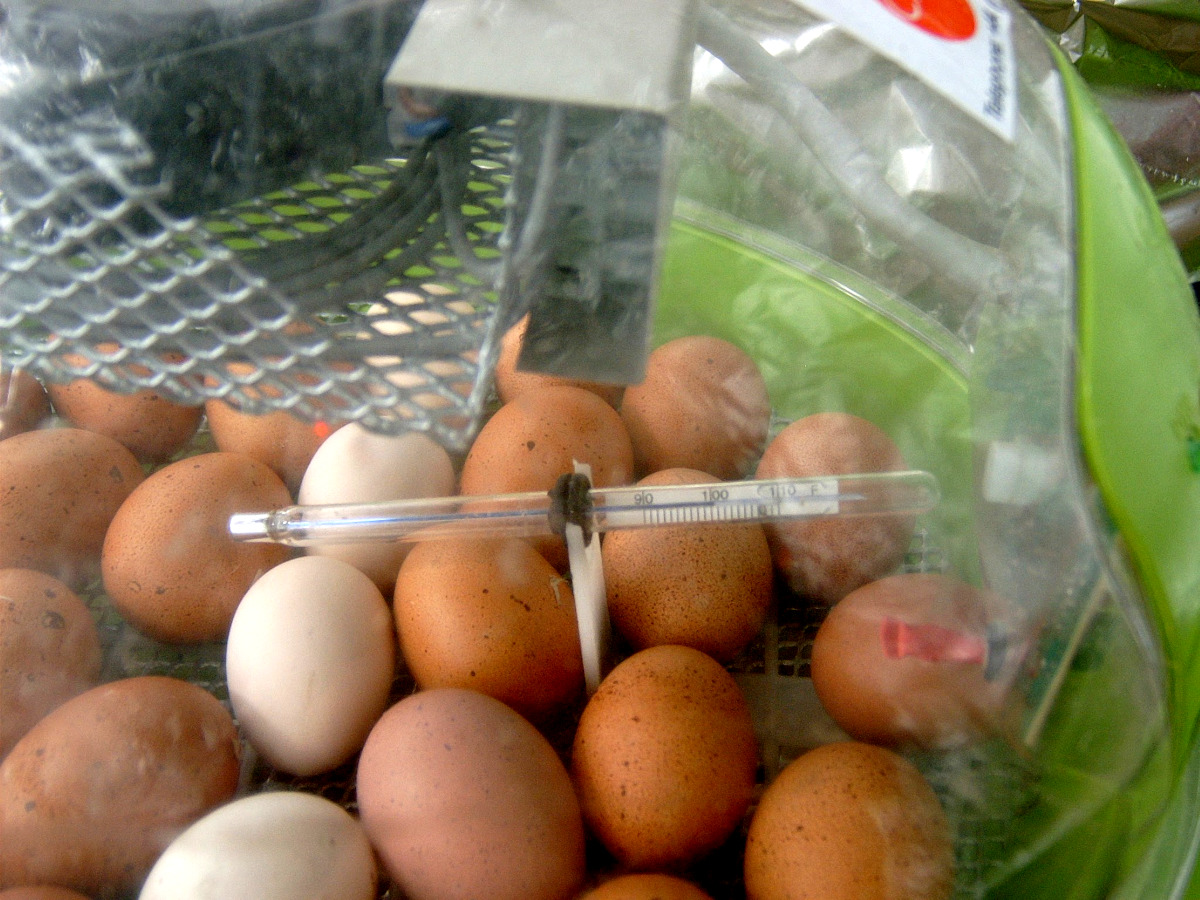
Egg incubators with automatic egg turners have two different ways of holding the eggs secure during incubation, some hold the eggs upright with the large blunt end up and some keep the egg horizontally flat on their sides and roll them backwards and forwards.
But which of these methods of egg position is better?
I have both types of egg turner and with the small numbers in my incubators, I have never noticed a difference in the hatch rates between the two.
Scientific testing has shown that egg incubated vertically have better hatch rates but only if turned much more often. As with everything there is always a trade off involved.
Below: In nature the hens always keep the eggs flat in the nests and most small incubators for backyard keepers mimic this process.
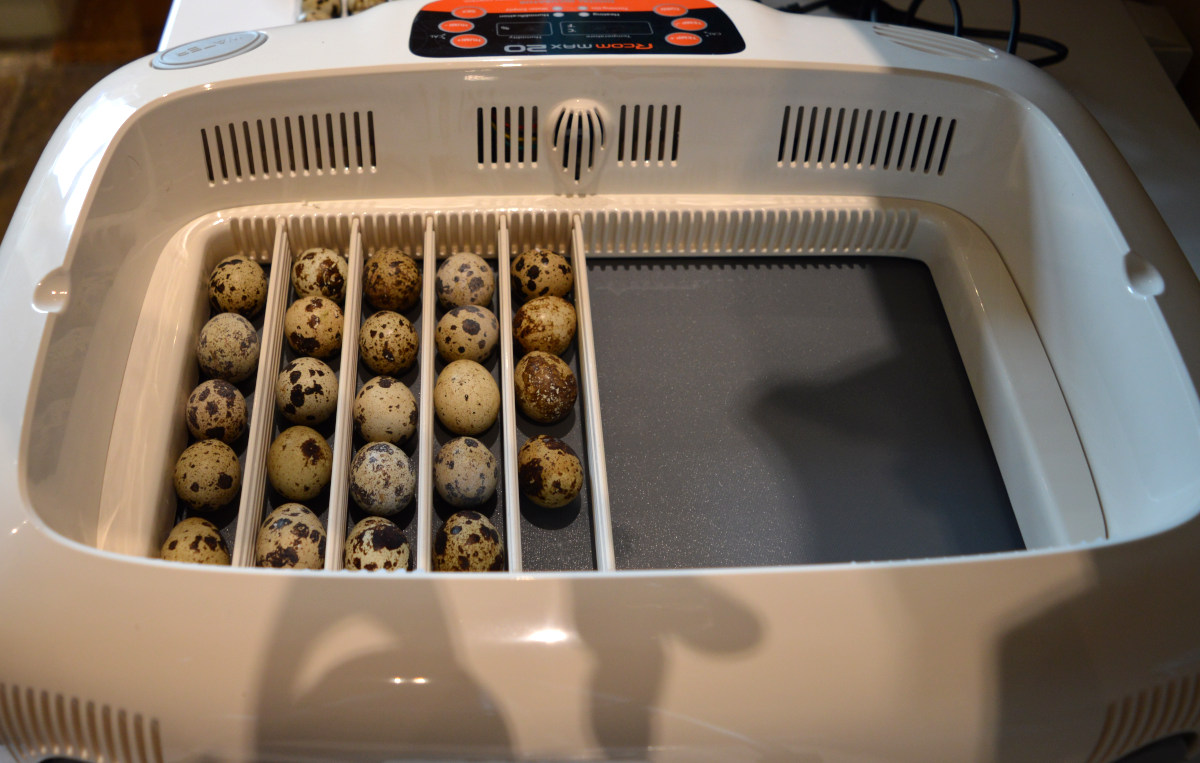
What is the best way to position eggs in incubator?
It is better to incubate eggs vertically with their large round ends pointing upwards, but only if the eggs are turned by at least 45 degrees either side of the vertical and more often.
A study in 1953 which incubated batches of 1533 eggs at a time found that hatchability of chicken eggs was increased from 71.3% for egg laid on their side to 75.1% for eggs incubated upright with their small ends down.
Below: A plot of the percentage of hatch versus angle of turning for for both flat and upright eggs.
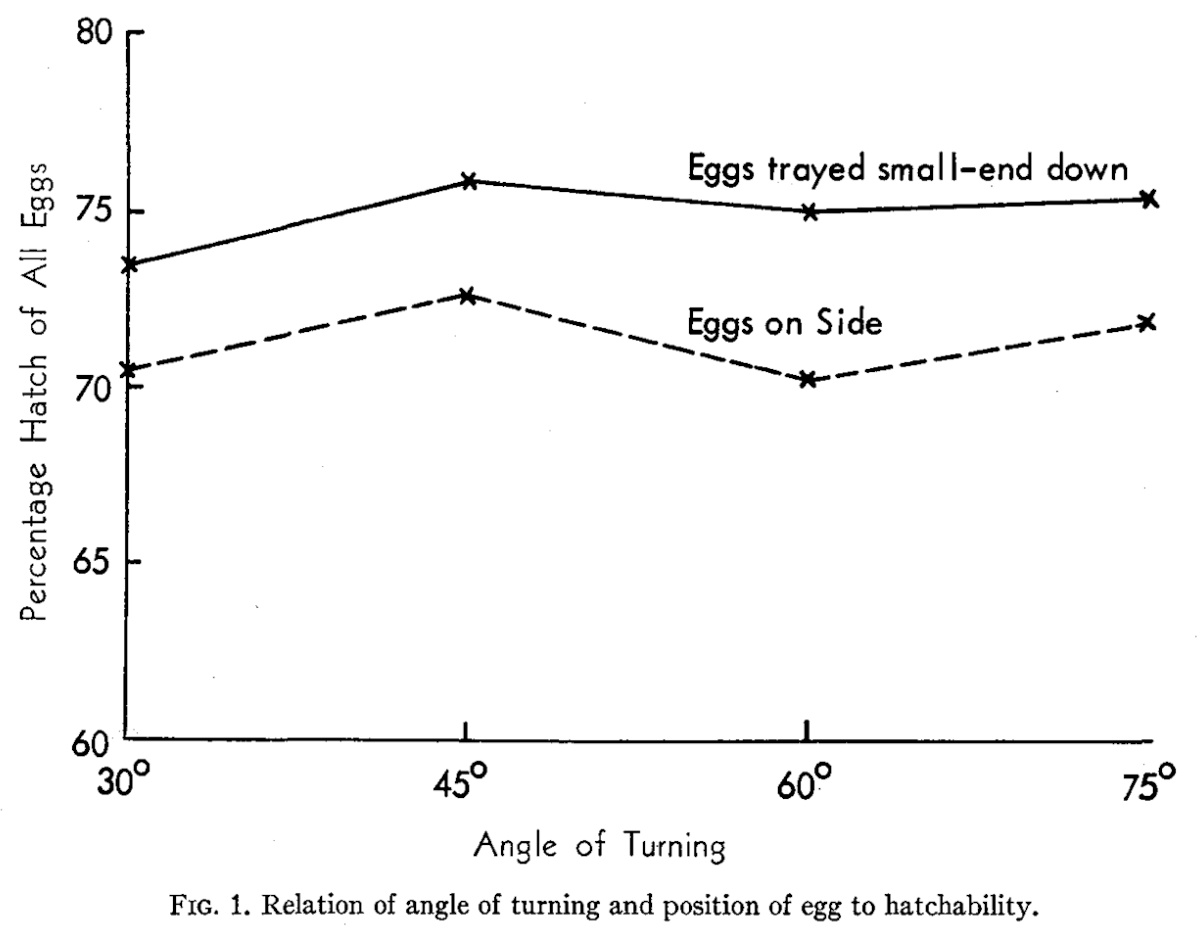
It is not all sweetness and light though, it was found during the study that eggs needed to be turned at least once an hour or 24 times a day to maintain the increase in hatch rate. This is in contrast to eggs which have been placed flat on their sides which only need turning 3 to 5 times in 24 hours.
Chick body weight, yolk weight, and yolk-free body mass were not affected by egg position.
An increase of 4% may not seem like much but commercially this represents a huge increase in productivity. It is not practical for the ordinary poultry keeper to turn their eggs 24 times a day unless you have automatic egg turners.
Below: The Brinsea machine tilts the eggs from side to side.
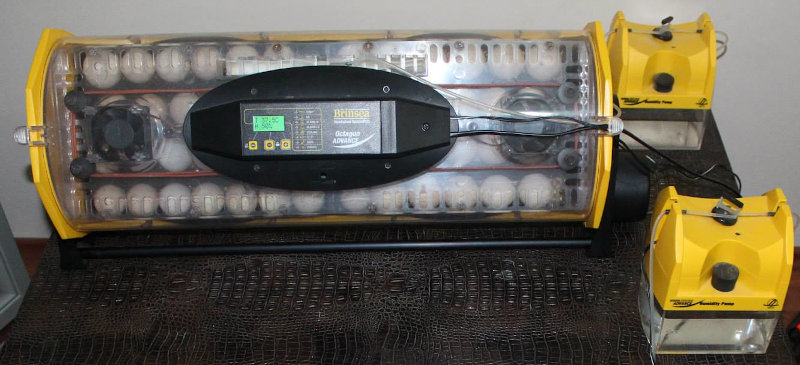
The air sac in the egg is located at the blunt end of the egg. When the egg is incubated vertically, the air sac is always at the top of the egg, which allows for better gas exchange.
If the egg is incubated flat on its side, the air sac can move around, which can disrupt gas exchange and lead to problems with the embryo.
Should you store eggs upright in trays or laying down on their sides?
It makes no difference whether you store fertile hatching eggs on their sides or upright in trays provided they are turned at least once a day.
Eggs stored on their sides must be turned through 180° at least once a day and egg stored upright must be tilted at least 45° either side of the vertical, a total movement of 90°.
The hens keep their eggs in a nest with stable humidity and temperature and the best action is to mimic them.
What position is best to hatch eggs in?
You should hatch eggs on their sides. This is the position they hatch in in nature and several studies have confirmed that egg laid flat to hatch have fewer malpositioned chicks.
Hatchability was affected by egg position in the hatching phase of incubation, but it did not affect the duration of the hatching process.
Below: You should remove egg cradles before hatching.
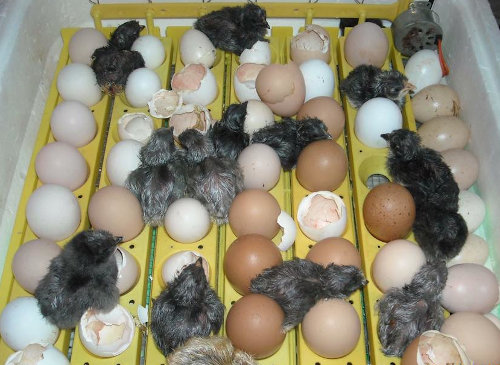
Eggs hatch better when flat on their sides, all other egg positions tested in the study resulted in increases of malpositioning of embryos to as much as 4.73%.
Conclusion:
If you have an incubator that turns the eggs on their sides you are likely to see almost the same results as with any other sort of egg trays. Cheap incubators often do not tilt egg far enough to see the benefit of vertical incubation.
Bigger gains in hatchability can be had with better selection and care of eggs, better husbandry of parent stock and improved incubation practices.
